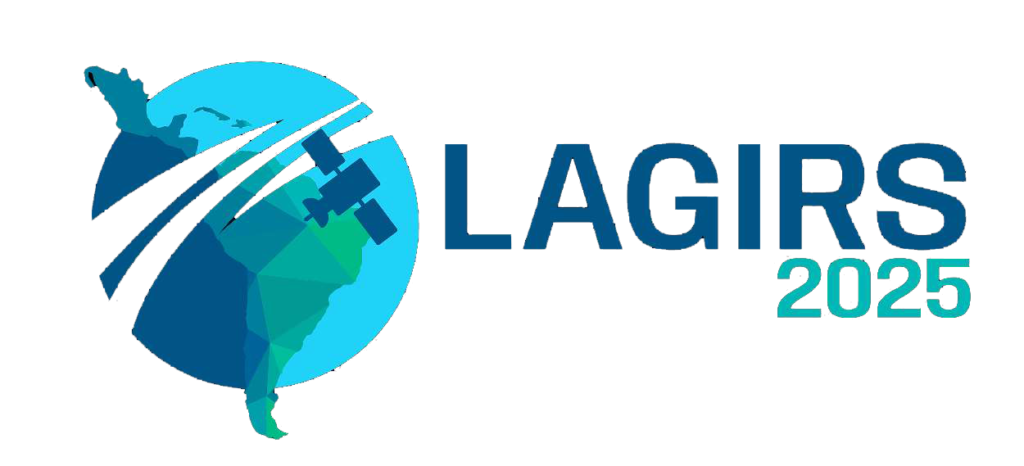FULL DAY (6 hours): 9:00-12:00 / 14:00-17:00
Tutorials
As part of the LAGIRS 2025 scientific program, we are pleased to offer a selection of hands-on tutorials covering key tools and methods in remote sensing and geospatial analysis. These sessions will be led by experts and are designed to provide practical skills and insights for researchers, professionals, and students.
Tutorials will take place on the first day of the conference: November 10, 2025.
Registration fees:
– Full-day tutorials: USD 50
– Half-day tutorials: USD 25
Tutorial registration must be completed together with the main event registration.
🔗 Register here: https://selperbrasil.org.br/inscricao/lagirs-2025/
Seats are limited – secure your spot now!
TUTORIAL 1: Python Dash and Plotly in Remote Sensing: Visual Tools for Environmental Management
Language: English
Instructors: Matheus Andrade de Souza and Paulo Gamero
Summary: This course will cover the fundamentals of building interactive dashboards using the Dash framework in Python. Topics include environment setup, project structuring, responsive layout creation with HTML, Core, and Bootstrap Components, interactive data visualization with Plotly Express, and implementation of dynamic callbacks.
Requirements
1. Each participant must bring a computer with Python interpreter (version 3.12.0 or higher) installed.
Prerequisites
- Basic knowledge of Python;
- Basic knowledge of GIT;
- Basic knowledge of CSS, HTML, and JavaScript.
Organized by: ITAIPU PARQUETEC
TUTORIAL 2: Earth Observation Data Cubes: Brazil Data Cube Technologies and SITS package
Language: English
Instructors: [To be defined]
Summary: This course introduces the Brazil Data Cube (BDC) project and its tools for analyzing satellite image time series. Participants will learn to explore Earth observation data cubes, extract time series and land cover trajectories, and compute phenological metrics using services like WTSS, WLTS, and WCPMS. The course includes hands-on activities using the BDC-Lab platform and the SITS R package for land cover classification with machine learning.
Requirements:
- Each participant must bring a computer to access the BDC-Lab environment and execute the codes.
- Prior knowledge of Python and R is recommended, but not mandatory.
Organized by: National Institute for Space Research (INPE)
HALF DAY (3 hours)
TUTORIAL 3: Download and processing of satellite data using Python and GEE.
Time: 9:00 – 12:00
Language: English
Instructors: PhD (c) Divar Castro, PhD (c) David Freire and PhD Andrés Velástegui
Summary: This course will provide the basic concepts for downloading and processing oceanographic/meteorological data that can be obtained from global databases. Basic programming skills are required and the scripts used will be provided to encourage replicability elsewhere.
Organized by: Escuela Superior Politécnica del Litoral, ESPOL (Ecuador) & Selper Internacional
TUTORIAL 4: Visualization of satellite data (Geoportal development) using JavaScript.
Time: 14:00 – 17:00
Language: English
Instructors: PhD(c) Divar Castro, PhD(c) David Freire and PhD Andrés Velástegui
Summary: This course will provide the basic concepts for visualizing oceanographic/meteorological data that can be obtained from global databases. Basic programming skills are required and the scripts used will be provided to encourage replicability elsewhere.
Organized by: Escuela Superior Politécnica del Litoral, ESPOL (Ecuador) & SELPER Internacional
TUTORIAL 5: Interferometric analysis using hyp3 y mintpy for glaciological applications
Time: 9:00 – 12:00
Language: English or Spanish
Instructors: PhD(c) Erling Johnson, PhD Carlos Cardenas
Summary: The Course will explore the basis of interferometry and will present a processing chain composed from cloud and in situ computations.
Requirements: Enrollment in ASF Alaska Hyp3 (free) and basic concepts of programming.
Organized by: Universidad de Magallanes, Chile
